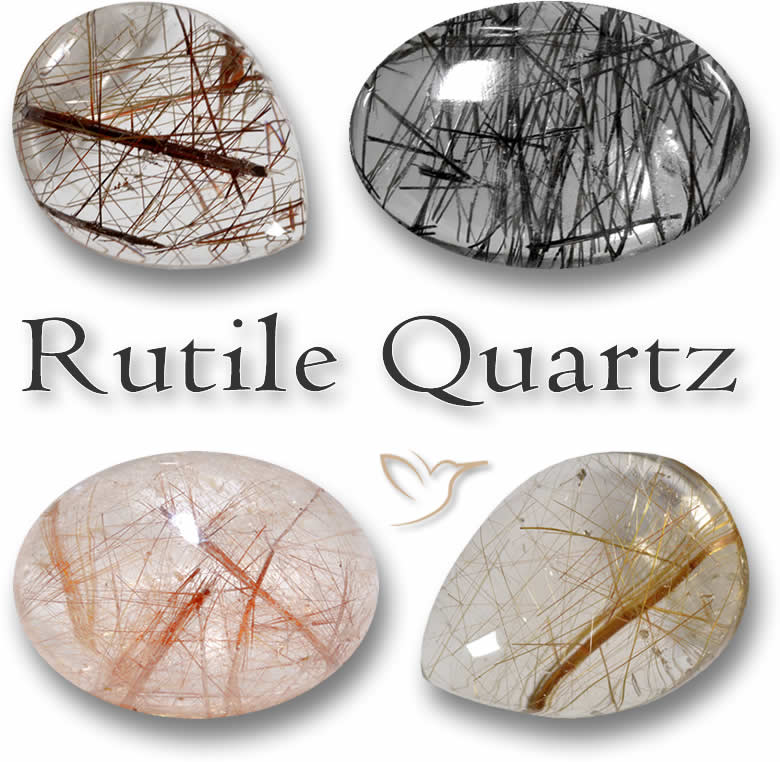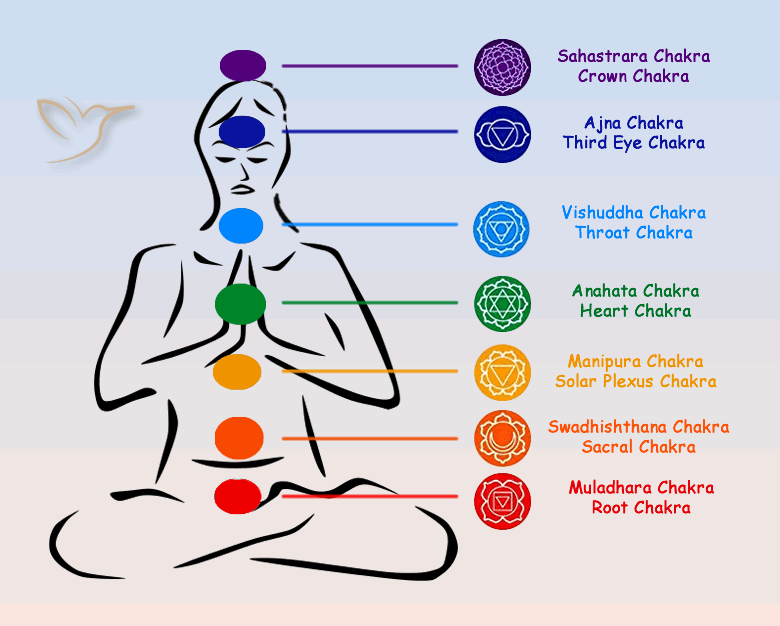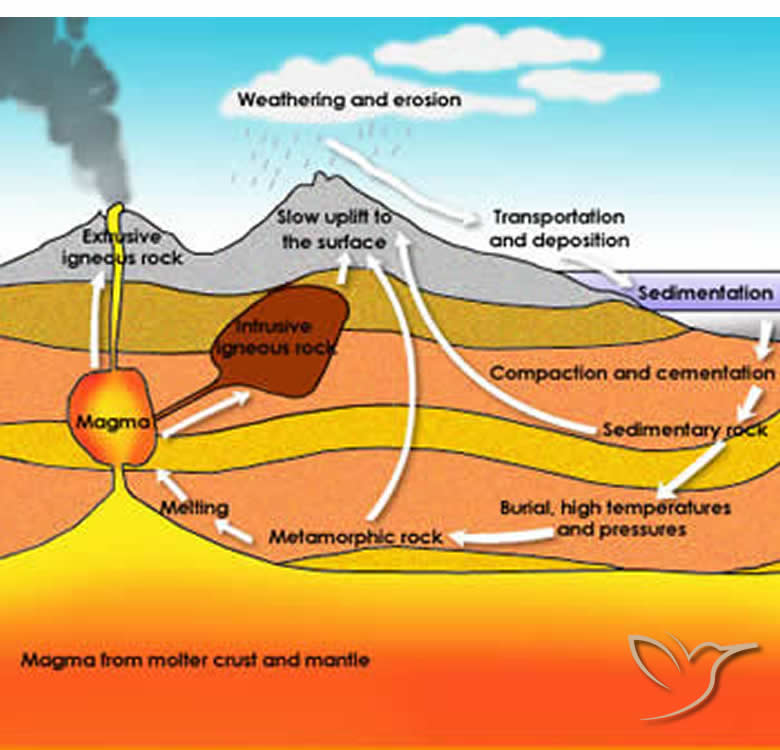Rutile Quartz Gemstone Information

Introduction
The quartz family stands as the most common mineral on Earth - sure, you might point to feldspar or bridgmanite, but I'm talking about the surface we walk on, the land we know.
From desert sands to mountain granite and ancient volcanic lava, quartz forms the backbone of much of our world. But let's focus on the gems: think amethyst, agate, rose quartz, and especially the intriguing rutile or rutilated quartz.
Quartz gems fall into two main categories.
Macro-crystalline types feature large, visible crystals - the classic clear points with sharp edges you spot in stores.
Micro-crystalline, or crypto-crystalline, versions pack tiny crystals tightly, often appearing opaque and rounded, like jasper or bloodstone.
Rutile quartz belongs to the macro-crystalline group. It typically shows full transparency, laced with fibrous or hair-like inclusions of titanium dioxide - that's the rutile part - in shades like yellow, red, or brown. These inclusions vary from slender to bold, crossed or aligned, delicate or robust, bringing unique personality to the clear quartz base.
Discover more about quartz gemstone types, properties, and uses.

Rutile Quartz Colors
The quartz host remains mostly transparent, while the rutile inclusions appear in red, gold, orange, brown, silver, gray, or rarely green.
Preferences drive value here, but vibrant golden yellows and warm copper reds often fetch higher interest and prices. Beauty really depends on what catches your eye, doesn't it?
Rutile Quartz Species
Rutile or rutilated quartz counts as a quartz variety, sometimes known by other names on occasion:
- Venus Hair Stone
- Angel Hair Quartz
- Cupid’s Darts
- Sagenitic Quartz
When inclusions form specific patterns, it might go by:
- Star Rutile Quartz
Smoky quartz sometimes hosts rutile inclusions too, creating captivating stones as long as the base isn't overly dark.

Rutile Quartz Clarity and Cut
The appeal of rutile quartz lies in its inclusions, so most pieces maintain high transparency. Translucent or opaque ones mainly attract collectors or serve as novelties.
While faceted cuts can look striking, cutters often shape them into cabochons - flat bases with domed, polished tops.
Available in generous sizes, these gems with their one-of-a-kind inclusions lend themselves to creative, standout jewelry designs.
Spiritual Meaning of Rutile Quartz
Disclaimer: The details on spiritual and health aspects of rutile quartz serve informational purposes only. They do not replace professional medical advice. Consult a healthcare expert for health issues.
Rutile quartz holds a unique place among crystals. Like other quartzes, it contains additional minerals that shape its properties.
The rutile, a form of titanium oxide, is said to amplify healing energies on its own. Paired with clear quartz's boosting qualities, it forms a potent combination.
This gem energizes users, offering strength for new ventures, tough tasks, and major hurdles. It builds physical and mental resilience while sharpening focus to tackle barriers head-on.
Emotionally, it may aid in addressing guilt, stress, or isolation, helping you identify and move past these feelings.

Rutile Quartz and the Chakras
Chakras act as energy hubs in the body, affecting physical and emotional states. Blockages can cause significant issues.
Thanks to its intricate composition and diverse inclusion colors, rutile quartz ranks among the rare gems believed to clear all chakras.
Chakras link to specific colors, and gems often match these for balancing - though not strictly.
Since it influences every chakra, identify the blocked one and position rutile quartz nearby to support alignment.
See our article on Chakra Gemstones here.
Health Benefits of Rutile Quartz
If fatigue or low drive hits, rutile quartz might energize you quickly, reviving your spark.
It reportedly supports breathing issues like bronchitis or asthma and boosts brain functions, potentially aiding dementia, senility, or ADHD.
Plus, it may benefit hair, teeth, nails, and skin health.
Whether emotional or physical, it could help ease unfounded fears or phobias, such as fear of spiders.

Rutile Quartz Price
Rutile Quartz Price List |
||
| Color | Weight range | Price range / USD |
|---|---|---|

Multicolor |
1ct and up |
$0.6 - 15/ct |
Quartz generally stays affordable, and even eye-catching rutile quartz won't break the bank.
Sure, specimens with crystal-clear bodies and striking, colorful inclusions - think sunny blond or reddish copper - might cost a bit more, but it often boils down to personal preference.
Gain insights into rutilated quartz prices and market trends.

Rutile Quartz Discovery
Quartz has served humans for millennia - as tools, decor, jewelry, or in rituals. Family members like amethyst, citrine, and rose quartz appear in records from ancient Egypt and Greece.
Rutile quartz emerged more recently as a valued gem. In the 1940s and 1950s, miners discarded clear quartz with rutile threads. Only later did collectors prize its distinct patterns and variety, boosting its worth.
Rutile in other minerals, like corundum, has long created asterism, the star effect in sapphires and rubies.
Quartz derives from German "Quarz" and Polish "kwardy" for hard. Rutile stems from Latin "rutilus" for red, based on early red samples named by scientist Werner.
See our article on Gemstone Names here.

Where is Rutile Quartz Found?
Rutile quartz appears worldwide, with top sources in Australia, Brazil, India, Madagascar, Pakistan, Russia, Spain, and the USA.

How is Rutile Quartz Formed?
Quartz often forms in pegmatite, an igneous rock from slow-cooling magma. Fluids and gases fill cracks, crystallizing over time into gems.
Introduced elements alter colors - iron for amethyst's purple or citrine's yellow, aluminum for smoky shades.
For rutile quartz, titanium likely integrated during cooling, growing in fine fractures within the quartz.
Can Rutile Quartz Be Treated?
Usually, rutile quartz receives no enhancements beyond standard cutting and polishing.
Its hair-like inclusions define its appeal; heat might dissolve them, ruining the effect. Dyeing would obscure the clear view needed to showcase them.
At GemSelect, we disclose any treatments on our gems.
What Jewelry is Rutile Quartz Suitable For?
Quartz rates 7 on the Mohs scale, making it sturdy for any jewelry. The rutile inside scores about 6 but stays protected by the quartz.
See our detailed article on the Mohs hardness scale here.
With large sizes at low costs, it's great for beginners experimenting in jewelry creation.
See our article on Jewelry Making Beginners here.
No two rutile quartz gems match exactly, ideal for artisans crafting bold, unique items.
How to Care for Rutile Quartz
Clean with warm soapy water and a soft wipe - that keeps it shining.
For storage, note its toughness (over 7 on Mohs), so avoid mixing with softer stones to prevent scratches.
Harder gems like ruby, sapphire, or beryl could harm it, though.
Store pieces separately in boxes or cloth pouches when not in use.

How to Tell a Real Rutile Quartz
Lab-grown clear quartz has existed for industrial use, mimicking natural versions perfectly.
Lab rutile once subbed for diamonds, but faking rutile quartz entirely seems unlikely - too much effort for little gain.
Here are tips for buying:
Study its look via images or in stores. Note rutile colors and patterns.
At 7 on Mohs, it scratches glass but resists nails or keys.
See our detailed article on the Mohs hardness scale here.
Price signals quality; too cheap might mean fake, given mining and processing costs.
Buy from reputable sources for assurance.
This isn't exhaustive, but it offers a start.
At GemSelect, we provide identification reports from labs like AIG, ICA GemLab, or BGL Lab.

Can Rutile Quartz Change Color?
Some gems shift colors dramatically under different lights - a rare trait. Rutile quartz does not exhibit this.
What is So Special About Rutile Quartz?
In most gems, inclusions count as flaws, removed by cutting or heating.
Not so with rutile quartz - the needle-like threads steal the spotlight. Each stone stands alone, with inclusions in yellow, red, gold, silver, copper, gray, or green.
Patterns mimic curly hair, straw bundles, stars, or crosses; dense or sparse, the variety astounds.
Once overlooked, it now graces high-end jewelry and influencer styles.
Hold one, and you'll get why it's gaining fans seeking standout pieces in a uniform world.
Rutile Quartz - Gemological Properties
|
Chemical Formula: |
SiO2,TiO2; Silicon Dioxide, Titanium dioxide |
|
Crystal Structure: |
Trigonal; hexagonal prisms |
|
Color: |
Colorless |
|
Hardness: |
7 on the Mohs scale |
|
Refractive Index: |
1.544-1.553 |
|
Density: |
2.65 |
|
Cleavage: |
None |
|
Transparency: |
Transparent to translucent |
|
Double Refraction or Birefringence: |
+0.009 |
|
Luster: |
Vitreous |
|
Fluorescence: |
None |
Frequently Asked Questions
What is rutile quartz?
Rutile quartz is a transparent macro-crystalline quartz with hair-like inclusions of titanium dioxide in various colors.
What colors do rutile inclusions come in?
Inclusions appear in red, gold, orange, brown, silver, gray, or rarely green, with golden yellows and copper reds being popular.
Is rutile quartz suitable for jewelry?
Yes, its hardness of 7 on the Mohs scale makes it durable for all jewelry types, especially unique pieces.
How do I care for rutile quartz?
Clean with warm soapy water and store separately to avoid scratches from other gems.
Does rutile quartz have spiritual or health benefits?
It's associated with energizing properties and chakra balancing, but this is informational only - consult professionals for health advice.
Can rutile quartz change color?
No, it does not exhibit color-changing properties under different lights.
Where is rutile quartz sourced?
It's found globally, with prime locations in Australia, Brazil, India, Madagascar, Pakistan, Russia, Spain, and the USA.
How can I verify if rutile quartz is genuine?
Check hardness, study appearances, consider price, and buy from trusted sellers; lab reports help confirm authenticity.

